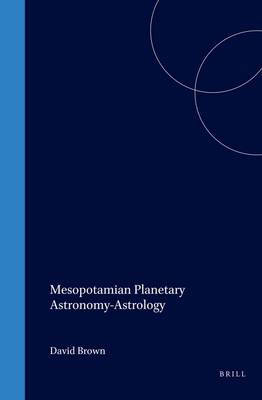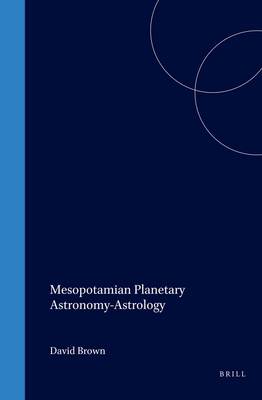
- Afhalen na 1 uur in een winkel met voorraad
- Gratis thuislevering in België vanaf € 30
- Ruim aanbod met 7 miljoen producten
- Afhalen na 1 uur in een winkel met voorraad
- Gratis thuislevering in België vanaf € 30
- Ruim aanbod met 7 miljoen producten
Zoeken
Omschrijving
Pliny wrote of Babylon that "here the creator of the science of astronomy was". Excavations have shown this statement to be true. This book argues that the earliest attempts at the accurate prediction of celestial phenomena are indeed to be found in clay tablets dating to the 8th and 7th centuries BC from both Babylon and from Nineveh. The author carefully situates this astronomy within its cultural context, treating all available material from the relevant period, and also analysing the earlier astrological material and the later well-known ephemerides and related texts. A wholly new approach to cuneiform astral concerns emerges - one in which both celestial divination and the later astronomy are shown to be embedded in a prevailing philosophy dealing with the ideal nature of the early universe, and in which the dynamics of the celestial divination industry that surrounded the last Assyrian monarchs account for no less than the first recorded "scientific revolution". This work closely adheres to the original textual sources, and argues for the evolution on the basis of the needs of the ancient scholars and the internal logic of the divinatory and predictive systems employed. To this end, it offers, for the first time, a Mesopotamian contribution to the philosophy, and not only the history, of science.
Specificaties
Betrokkenen
- Auteur(s):
- Uitgeverij:
Inhoud
- Aantal bladzijden:
- 336
- Taal:
- Engels
- Reeks:
- Reeksnummer:
- nr. 18
Eigenschappen
- Productcode (EAN):
- 9789056930363
- Verschijningsdatum:
- 1/01/2000
- Uitvoering:
- Hardcover
- Formaat:
- Genaaid
- Afmetingen:
- 180 mm x 247 mm
- Gewicht:
- 857 g

Alleen bij Standaard Boekhandel
+ 592 punten op je klantenkaart van Standaard Boekhandel
Beoordelingen
We publiceren alleen reviews die voldoen aan de voorwaarden voor reviews. Bekijk onze voorwaarden voor reviews.











